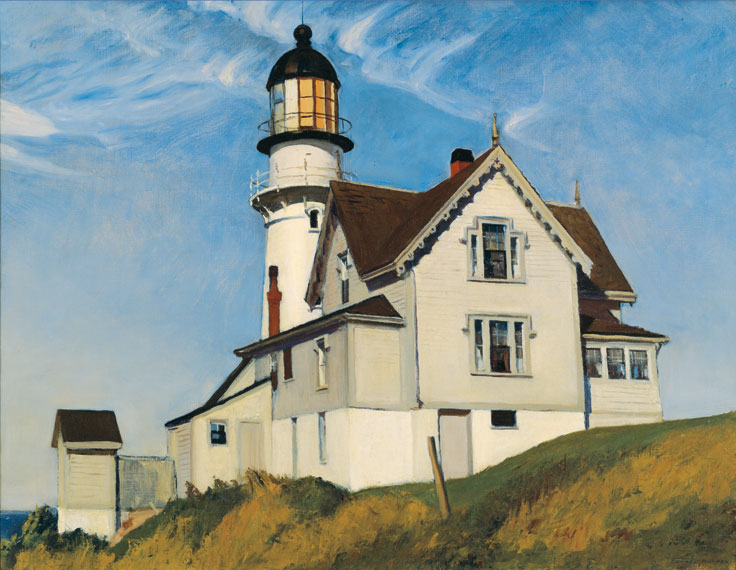July 15 - October 16, 2011
A Guide To Hopper's Maine | Alex Katz Talks Edward Hopper
Edward Hopper's Maine

"My aim in painting," Edward Hopper (1882-1967) once wrote, "has always been the most exact transcription possible of my most intimate impressions of nature." And yet, to look at many of Hopper's best-known paintings, with their characteristic coolness, is to accept that statement uneasily. Though they are less familiar, it is the paintings and watercolors that the artist produced during nine summers between 1914 and 1929 — with Maine as his muse — that perhaps most bear out his "intimate impressions of nature."
Organized in association with the Whitney Museum of American Art, Edward Hopper's Maine brings together 88 of these early paintings, watercolors, drawings, and prints. With loans from nearly thirty public and private collections, this exhibition represents the first comprehensive examination of this crucial period of artistic experimentation. Among the institutions who have generously loaned works are the Metropolitan Museum of Art, the Museum of Fine Arts, Boston, the Cleveland Museum of Art, the High Museum of Art, and the Philadelphia Museum of Art.
After studying painting with William Merritt Chase and Robert Henri, Edward Hopper traveled to Europe three times between 1906 and 1910. Once he settled in his New York studio, he began to reconcile his indigenous training with the painterly traditions that he had encountered abroad, attempting to set himself apart from legions of other downtown artists. Like many painters, he sought refuge from New York City summers in coastal colonies, initially in Gloucester, MA, then traveling to Maine for the first time in 1914. Hopper spent two consecutive summers in Ogunquit, the second of which saw his plein-air painting thwarted by fog. In 1916 he decamped for the more remote Monhegan Island, where he would return for the next three summers, one of a very diminished number of wartime visitors.
At the core of Edward Hopper's Maine are nearly all of the thirty-two oil sketches that the artist executed during the summers he spent on Monhegan. These small panels, many of which were never shown in the artist's lifetime and continue to be under-exhibited, are astonishing in their jewel-like hues, painterly execution, and spatial ambiguity. Seen en masse, these oils yield unique insight into the artist's process by revealing his sustained contemplation of similar motifs. Stalking his subject, Hopper painted the Monhegan headlands repeatedly, but under such varying conditions, and from such different vantages, that the works' seriality is not immediately apparent.
By 1924, Edward Hopper had taken up watercolor painting and begun to exhibit at the Frank K. M. Rehn Gallery in New York, where he would enjoy his first significant commercial success. Returning to Maine in 1926 (this time to Rockland), and again in 1927 and 1929, he painted some of his most iconic Maine images — lighthouses, beam trawlers, dories, and coastal villages like Cape Elizabeth. Natural beauty becomes increasingly peripheral to Hopper's study of structures and vessels, and one begins to perceive here the heightened tension between rational operations and subjective sensations ("the most exact transcription of my most intimate expressions") that will characterize his mature painting. This concentrated look at a significant body of rarely seen work sheds new light on one of the greatest painters of the twentieth century.
A 176 page, fully illustrated catalogue accompanies Edward Hopper's Maine published by DelMonico Books-Prestel. Contributors include Hopper scholar Carol Troyen, actor-collector-writer Steve Martin, poet Vincent Katz, Whitney Museum curator Carter Foster, Kevin Salatino and Diana Tuite.

Edward Hopper's Maine is available for purchase in the Bowdoin College Museum of Art gift shop and online. This catalogue is published with the assistance of the Wyeth Foundation for American Art.




